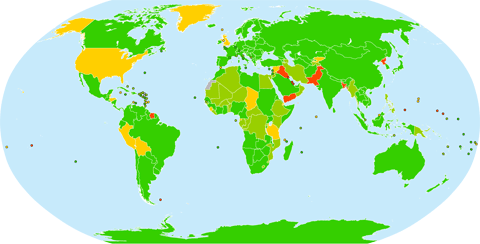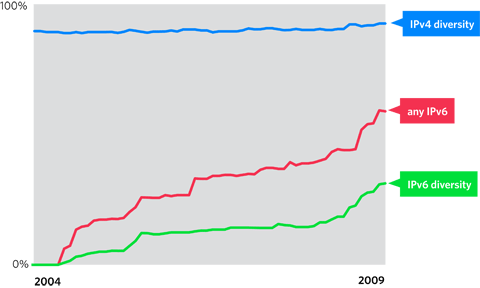In managing the root zone, recently we clarified some of the technical conformance criteria for the name servers top-level domain operators use. Before we put the adjusted criteria in place, we did some research to find out real world compliance against some of the metrics.
One of the more interesting insights involved looking at network diversity. We want top-level domains to keep functioning no matter what is happening — any conceivable disaster shouldn’t knock a top-level domain off-line. One thing we ask is that top-level domains’ name servers be hosted in at least two distinct networks, so it is guarded against a failure (be it a technical failure, or some other business failure event).
Here is a map of all the country-code top-level domains, and one possibly measure of diversity — the number of “autonomous systems” their name servers are hosted in. Countries marked red are reliant on a single network, and if that network failed it could be disastrous for its users without alternatives. Those orange through green have increasing amounts of diversity in the networks that host their name servers:
If we take a minimum of two networks as our baseline requirement, we can look at how TLDs have met this criteria over a period of time — say the last five years:
The blue line shows IPv4 connectivity and it is pretty good, and rather consistent. But if we judge IPv6 connectivity against the same diversity requirement, shown as the green line, not even 50% of ccTLDs have this level of diversity. If we look at TLDs with any IPv6 it is a little better, but there is still about a third of all ccTLDs with no IPv6 connectivity at all!
The good news is the IPv6 trend lines are heading in the right direction, with the growth of IPv6 deployment even accelerating a little recently. Lets hope this continues so that these critical resources are stable not just for existing Internet users, but for future Internet users as well.




